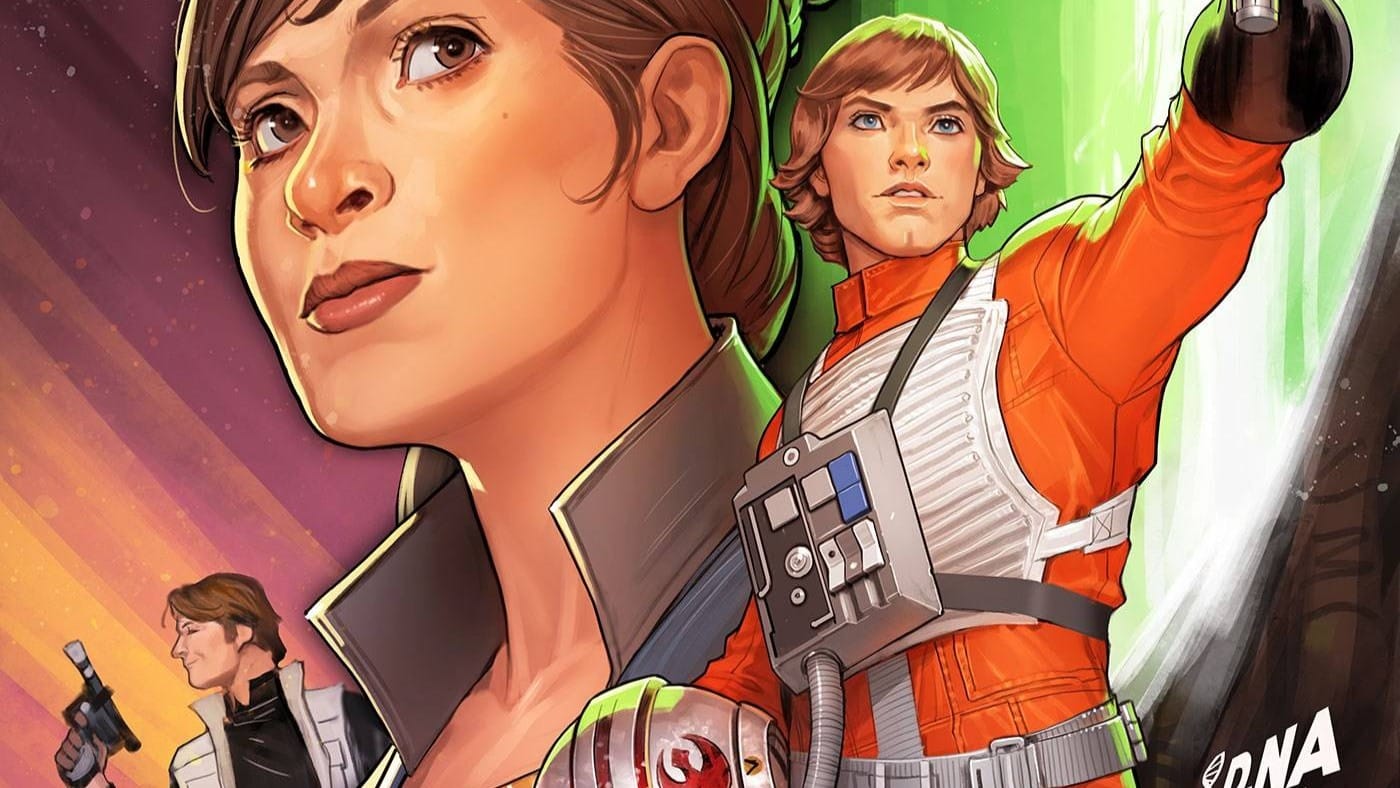Vader gets lost in the influx of new characters and an uninspiring plot in Star Wars: Darth Vader #19 written by Greg Pak, art by Guiu Vilanova, colored by Alex Sinclair and lettered by Joe Caramagna.
Two issues into the “Crimson Dawn” era of this series, things are already starting to feel repetitive. After last issue’s “putting the band together” story kicked off Darth Vader’s newly-assigned mission to hunt down the Crimson Dawn loyalists stationed throughout the Empire, this one features the first mission of the team he’s assembled. But while his eclectic mix of “Revengers” (people out for revenge against Crimson Dawn for the suffering they’ve inflicted) and “Assassins” (a trio recruited by fellow assassin Ochi of Bestoon, who are in it for the money) are, at the very least, a visually-intriguing bunch, their actions throughout the issue are pretty ho-hum.
For as much as a ripped reptilian Trandoshan, a multi-armed bug man, and an enormous mechanical death ball are fun to look at, their mission here to root out Crimson Dawn agents on the planet Laecor is a by-the-numbers affair: they fight some goons, squabble a bit, and capture a base. Writer Greg Pak is putting in the work to make all these new characters stand out beyond their visuals, establishing the Revengers as being a tighter knit group operating a bit closer to the moral high ground than their Assassin counterparts, but there’s simply too many of them vying for page time (and reader attention) for any (let alone all) to capture the attention of readers.
Pak does liven up the issue a bit through the presence of Valance the Hunter, ported over from Star Wars: Bounty Hunters, where he was captured and coerced into helping Vader in the Crimson Dawn mission, and the continued presence of Ochi. Even if Valance doesn’t do much here, the dynamic between him and Vader punches up the proceedings on Laecor, given the animosity Valance feels towards Vader and the fact that, unlike everyone else on the mission, he’s involved against his will. Meanwhile, Ochi continues to be a delight, as his own attempts at scheming and manipulation are consistently undercut by Vader, such as when he uses the Revengers to draw out the Crimson Dawn forces while holding his Assassins in reserve, only to have Vader (literally) push him out on the front line when the Revengers don’t prove to be potent enough bait. It’s a great example of the dry-yet-macabre humor Vader has occasionally displayed under Pak.
Speaking of Vader, while he largely takes a back seat to the newer characters in this issue, Pak continues to keep him at the thematic center of everything. As he’s done repeatedly throughout his tenure on the title to good effect, Pak uses brief flashbacks scenes from the Prequel Trilogy to inform Vader’s present day outlook; Vader remains a merciless figure of calculating violence, but Pak makes clear the events in the life of Anakin Skywalker which would lead to someone like Vader coming to believe that order, at any cost, is the key to happiness – for himself, and for the galaxy.
Similarly, he plays with Vader’s relationship with the lore of the Jedi to further Vader’s position as the protagonist of the series: at one point, he dramatically intercedes to save the life of bystanders poised to be massacred by a group of Stormtroopers. It’s presented with the same heroic trappings and stagings that someone like Luke would get when doing the same thing, but it’s quickly revealed the Stormtroopers are Crimson Dawn agents in disguise and Vader needs the bystanders to root out their base. Yet nevertheless, from the perspective of those bystanders, Vader has acted in a manner not unlike that of the heroic lightsaber-wielding figures of the past of which they’d heard tales. The way Vader has twisted past events to view his current goals as being driven by benevolence, combined with the way his actions in pursuit of that goal can be viewed, from a certain point of view, as acts of heroism not unlike the stunts he pulled in his days as a Jedi, is the most engaging thing about this issue.
Unfortunately, all of that material remains mostly on the backburner in favor of the more immediate plot, and that plot is simply not compelling enough to justify the focus it’s given. By the end of the issue, Vader and his team uncover the Crimson Dawn base and discover data suggesting the infiltration of Crimson Dawn has reached the highest levels of the Empire. It is presented as a stunning revelation, one which closes out the issue, clearly intended to leave readers hanging until the next one. Yet it’s not presenting much new information that wasn’t already established in issue #17, and thus seems hardly befitting the issue-ending sting it receives. Combine that with the continued by-the-numbers development of the new characters and it’s hard not to feel like the series is already in “killing time” mode. What’s worse, as it goes through the motions with a routine issue-specific plot while moving the larger Crimson Dawn arc forward incrementally (at best), it’s backburnering the most intriguing parts of the series: the way Vader’s past informs his present actions, and his complicated relationship with being the “hero” of any story, but especially, his own.
Austin Gorton also reviews older issues of X-Men at the Real Gentlemen of Leisure website, co-hosts the A Very Special episode podcast, and likes Star Wars. He lives outside Minneapolis, where sometimes, it is not cold. Follow him @austingorton.bsky.social.






